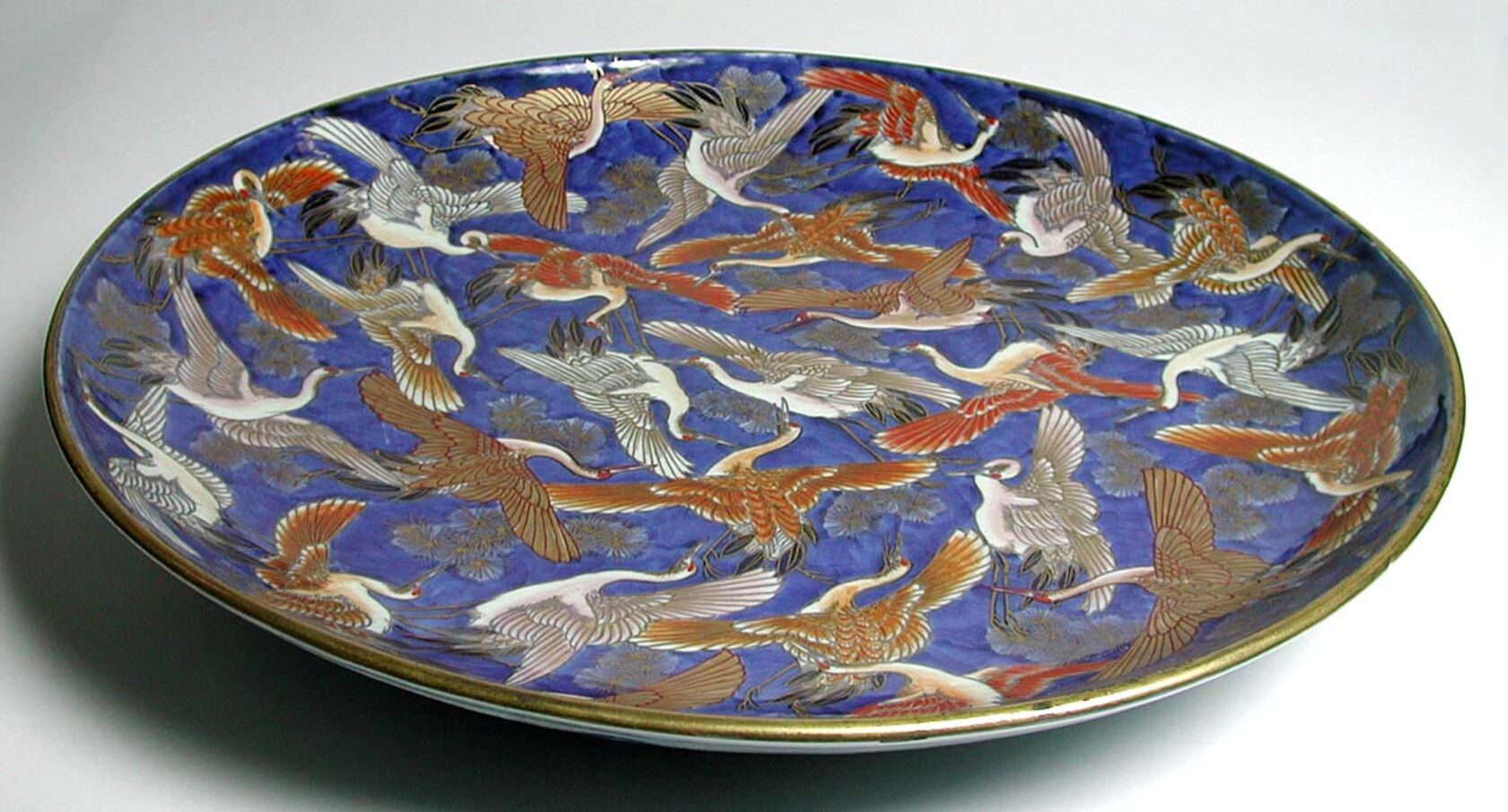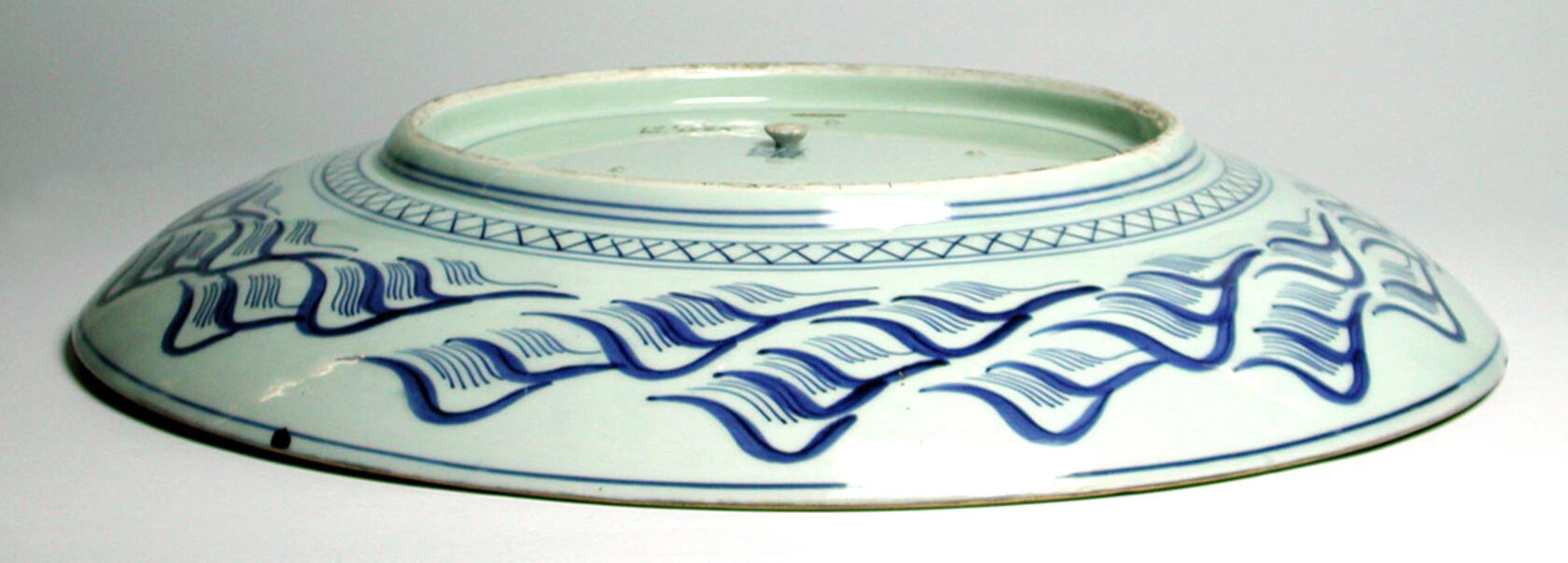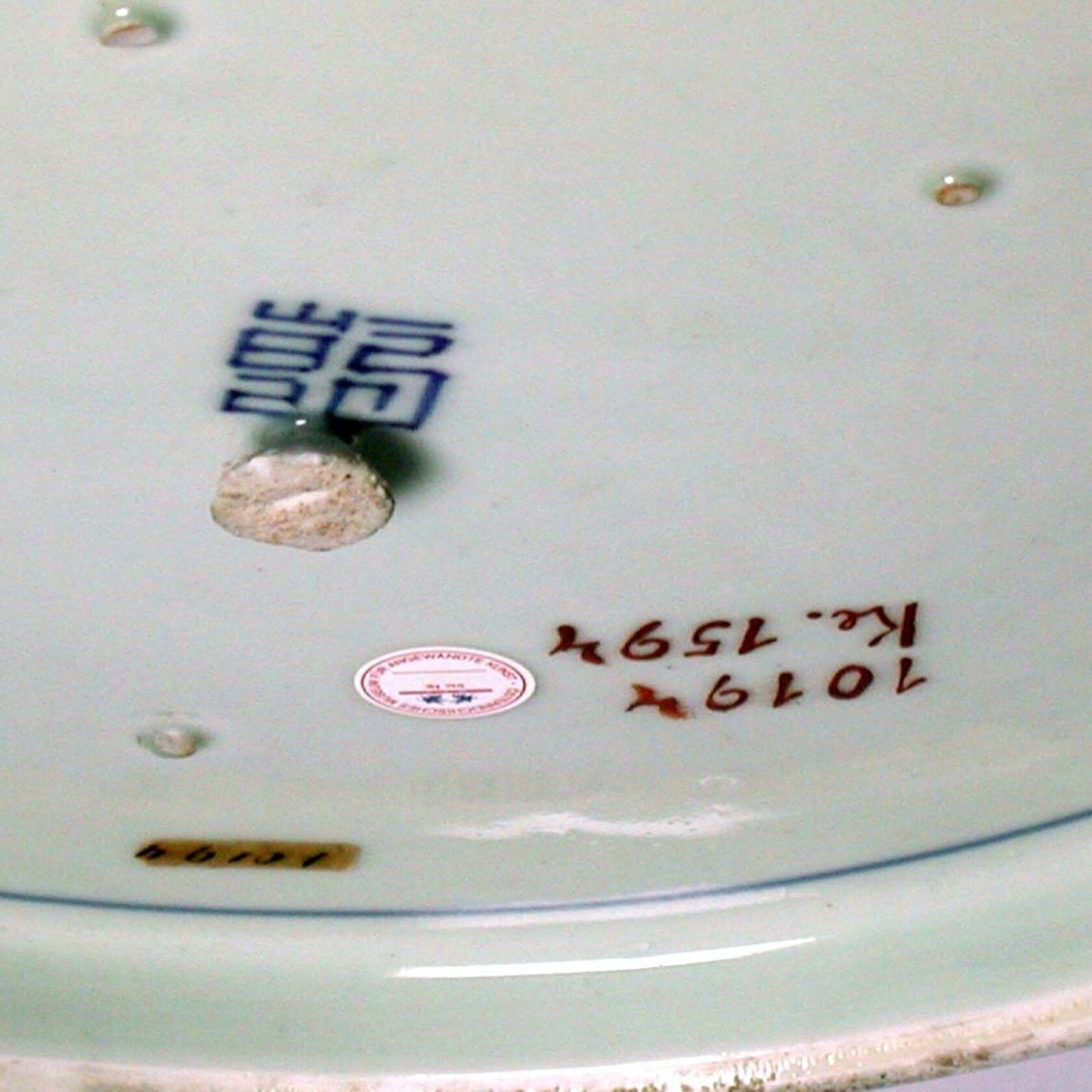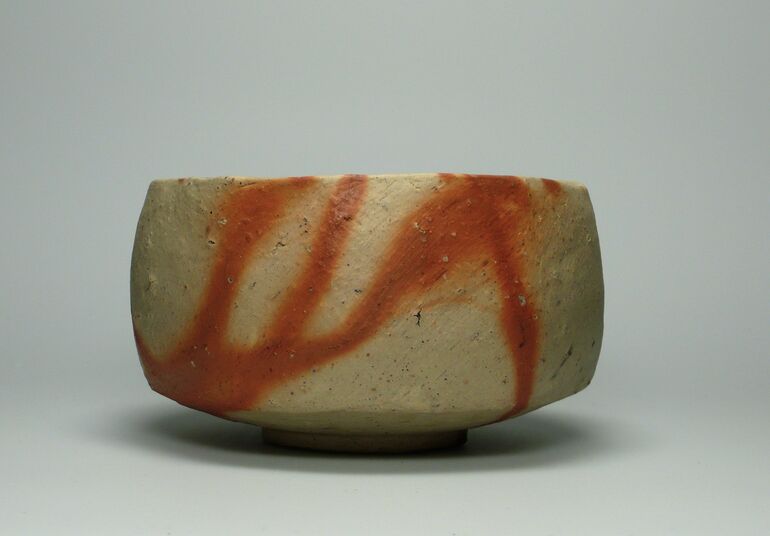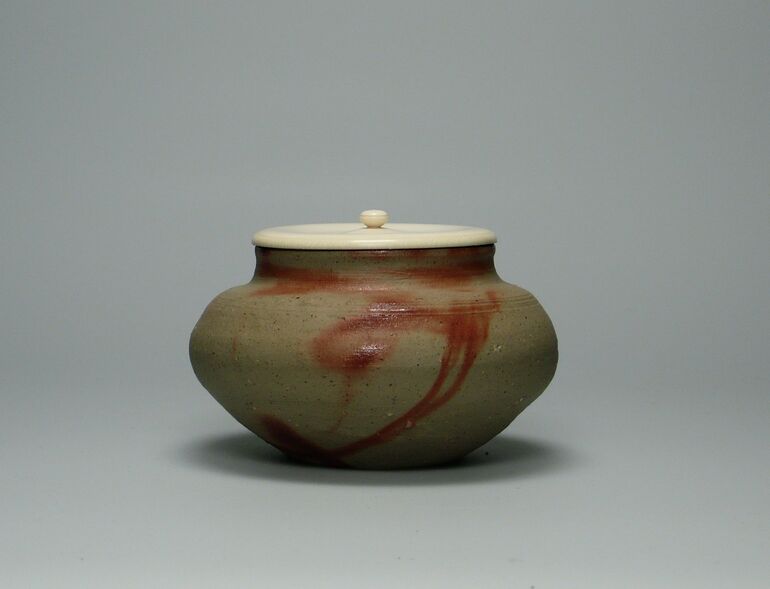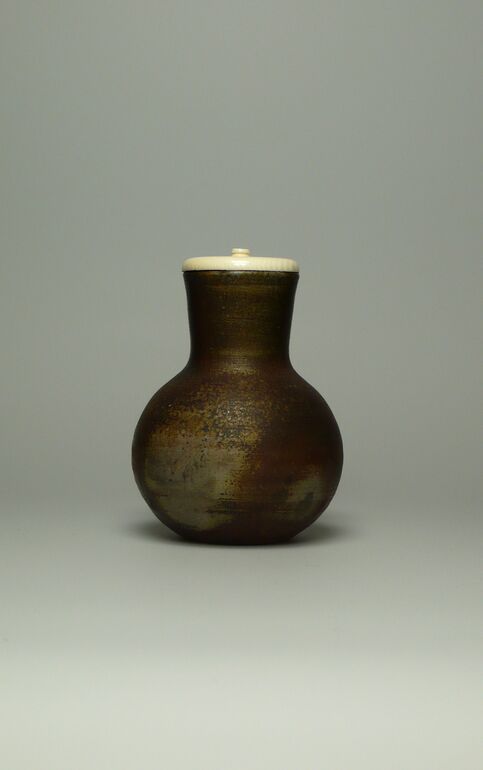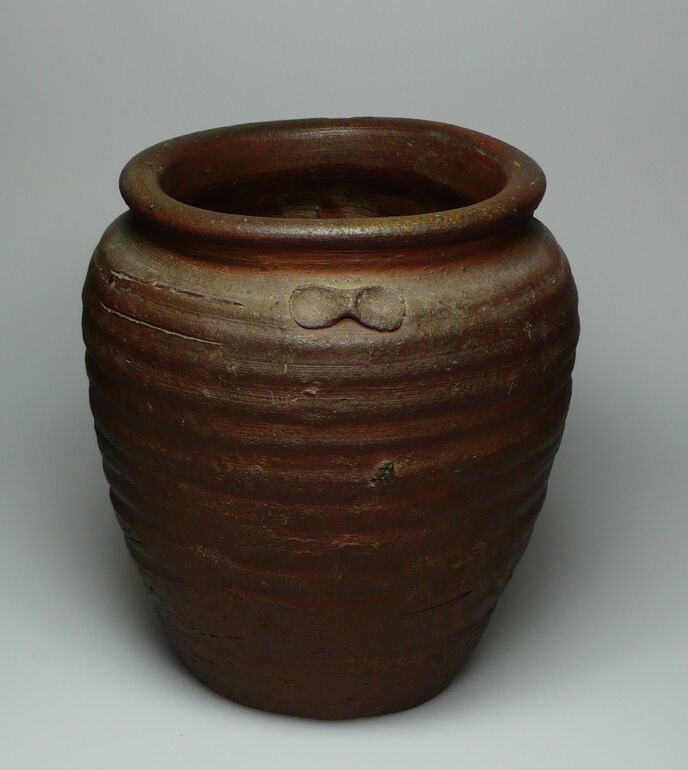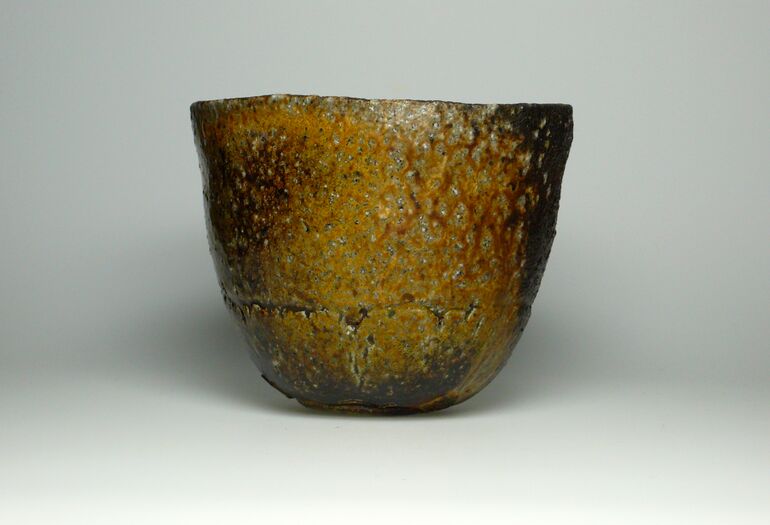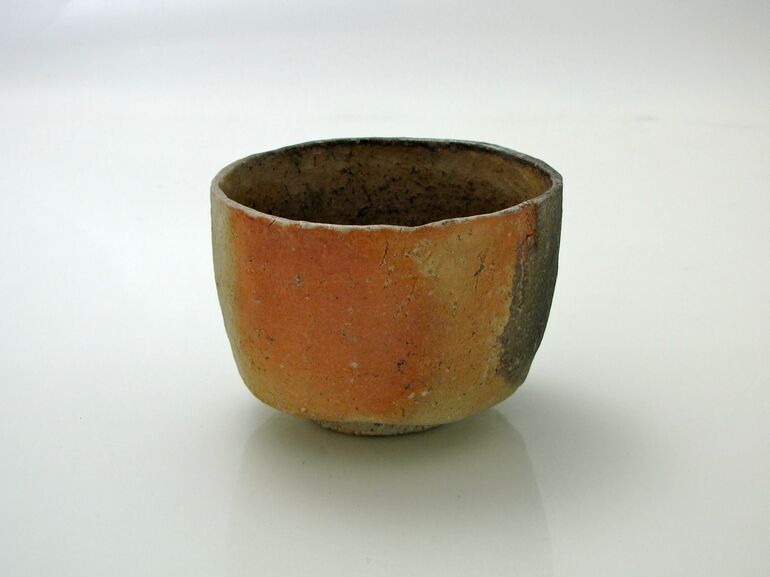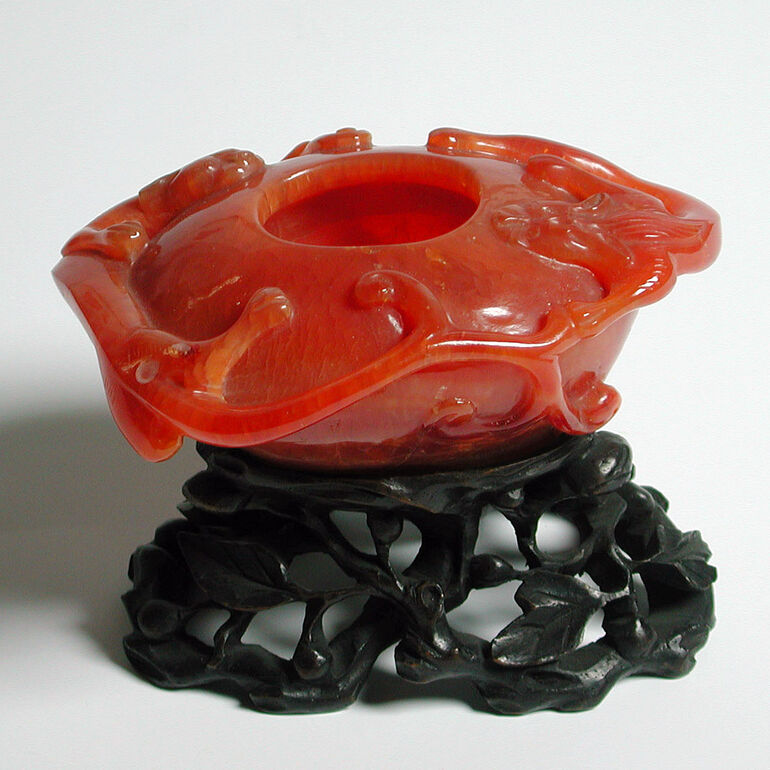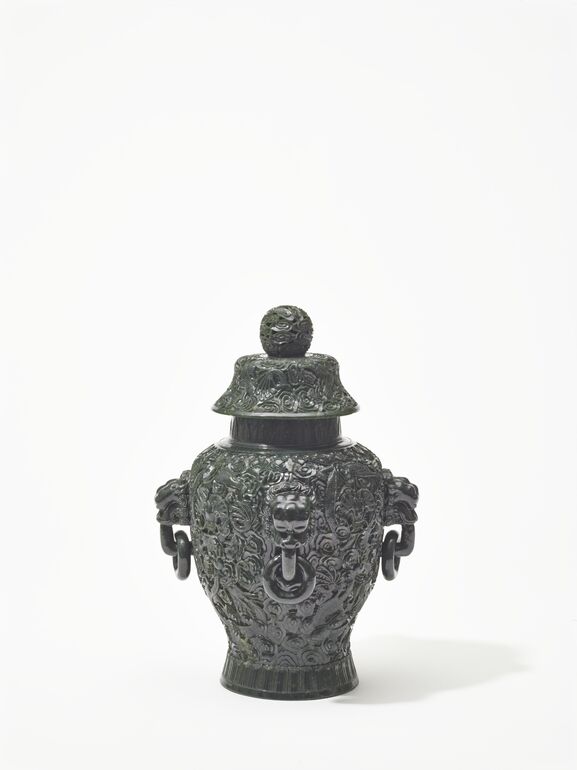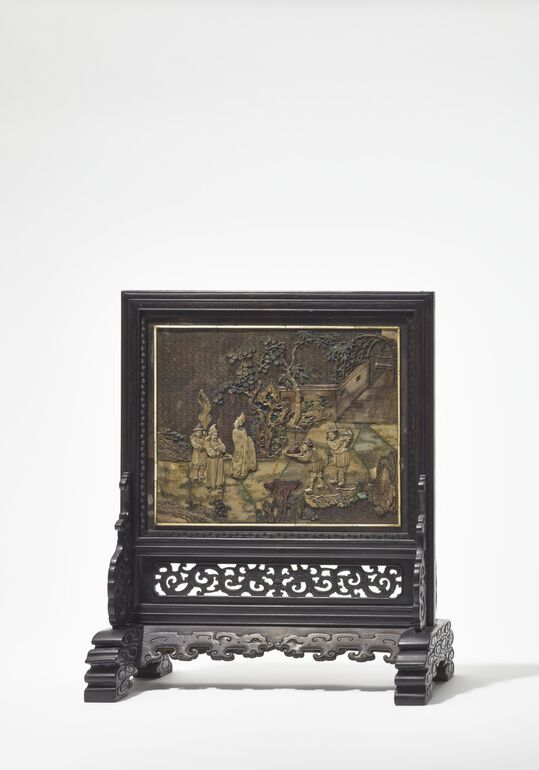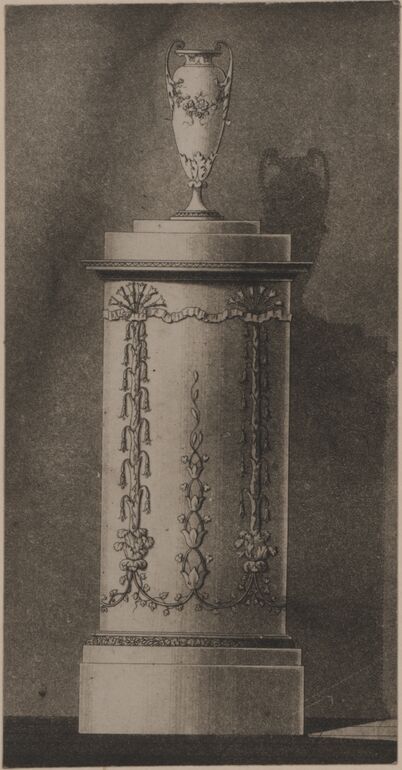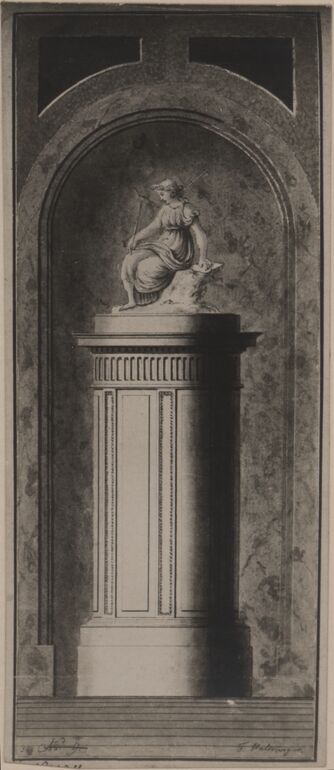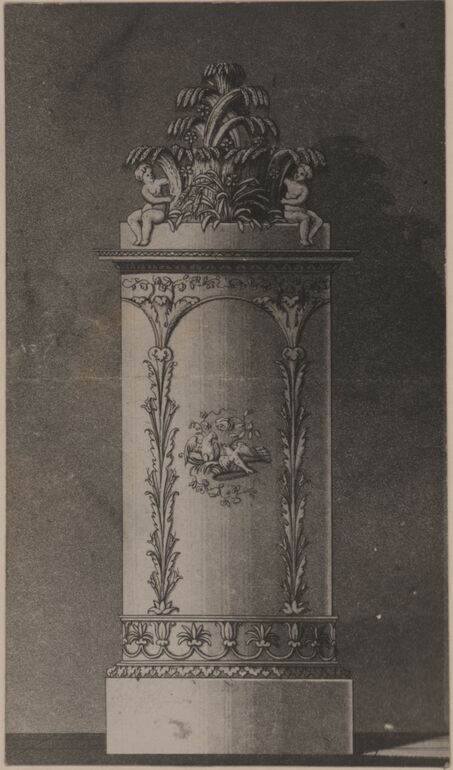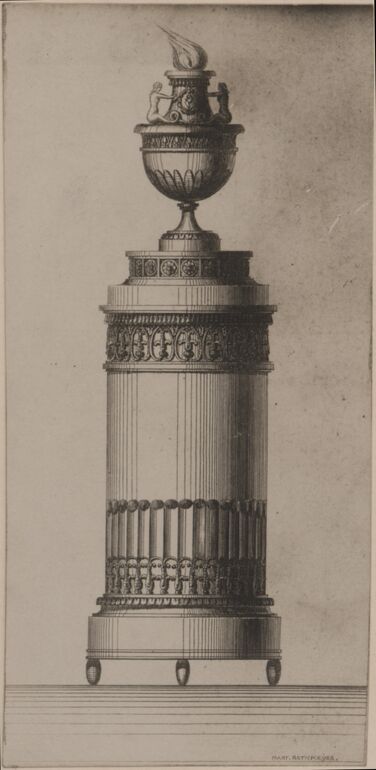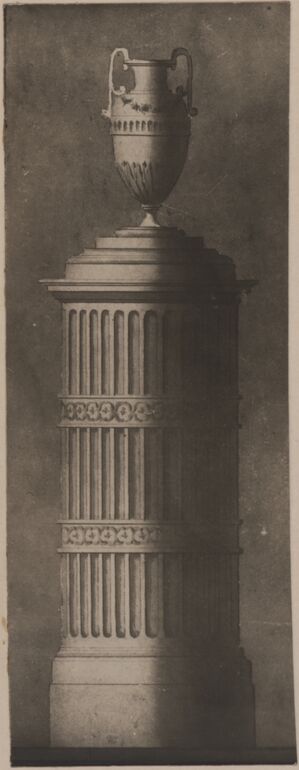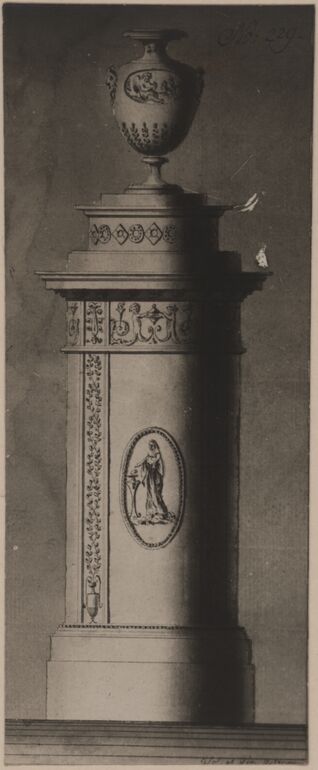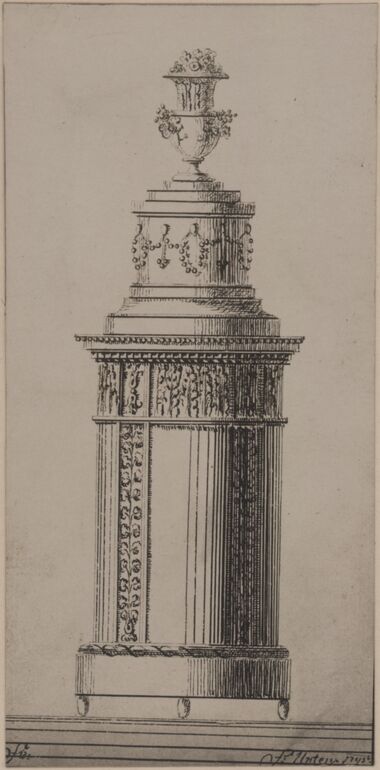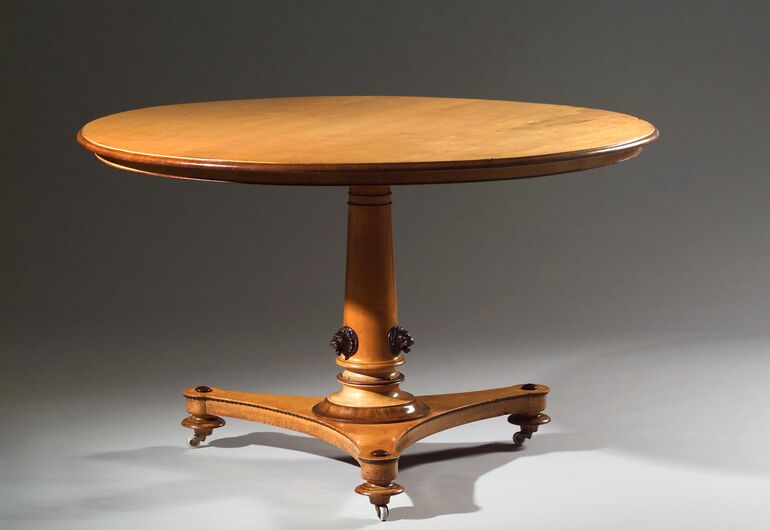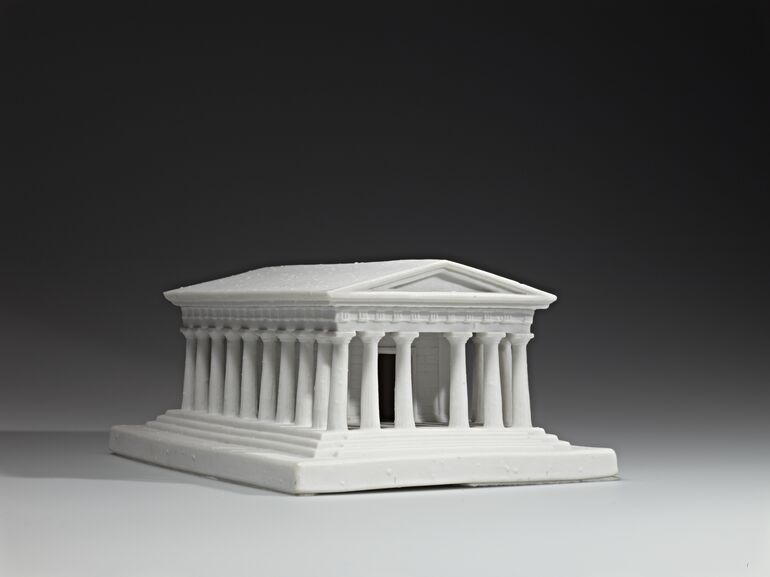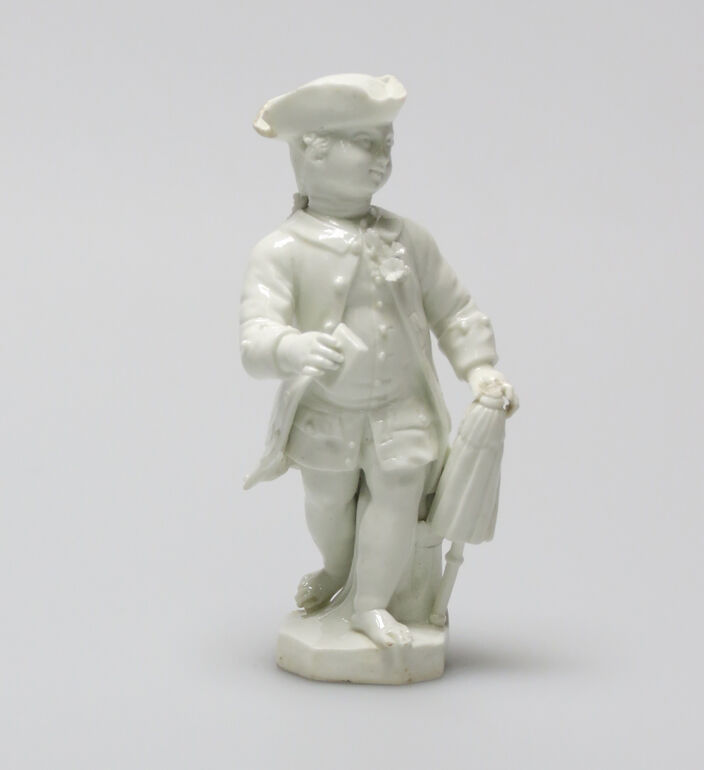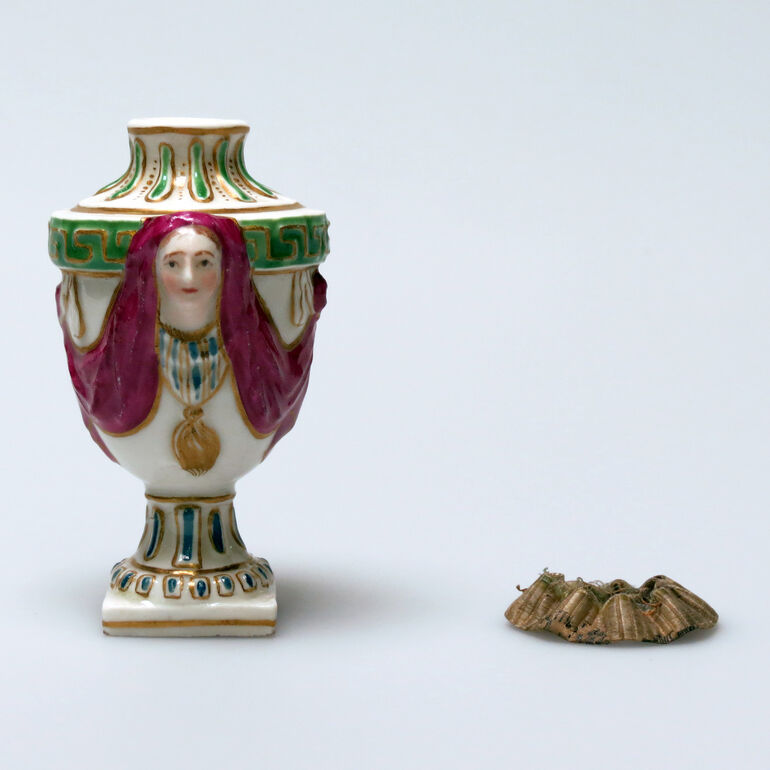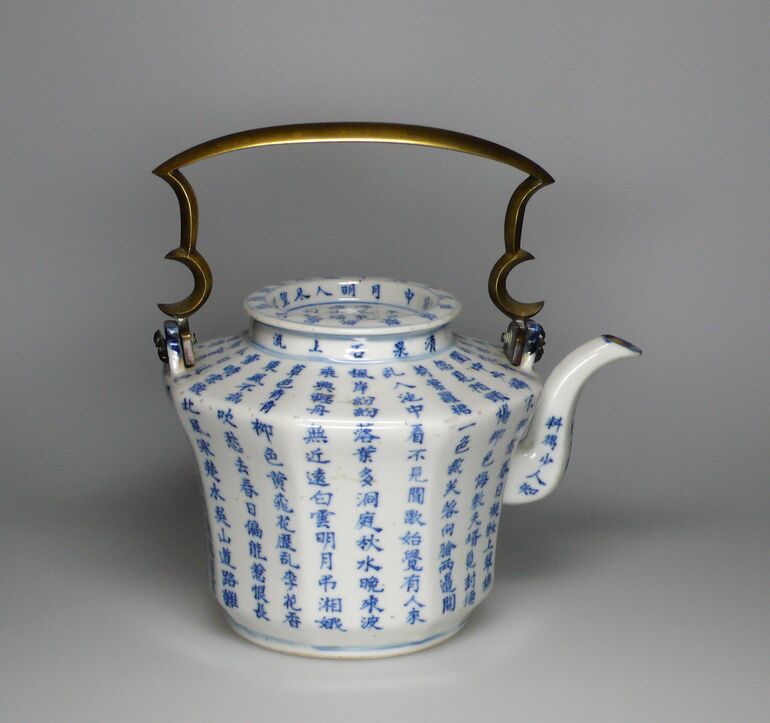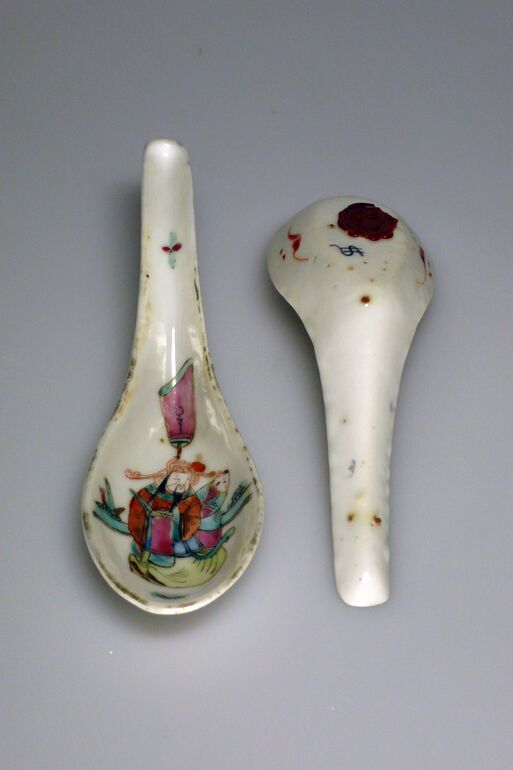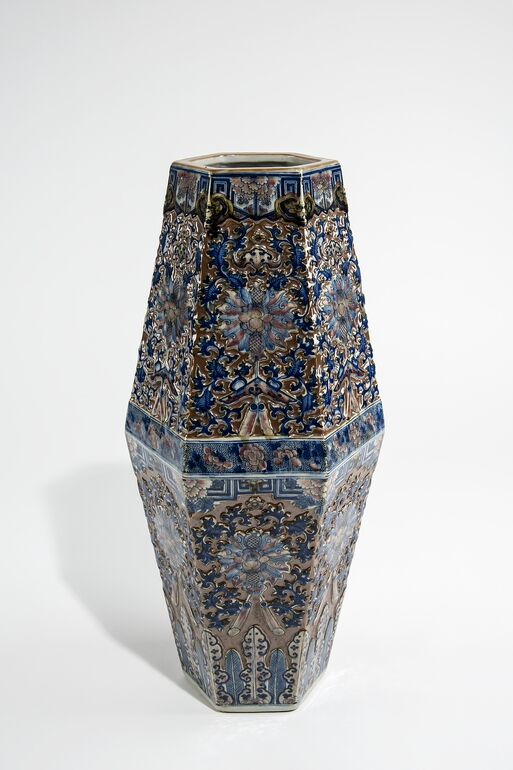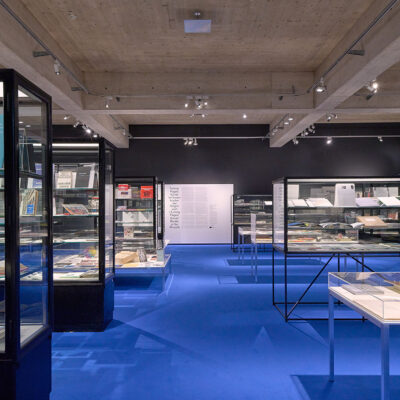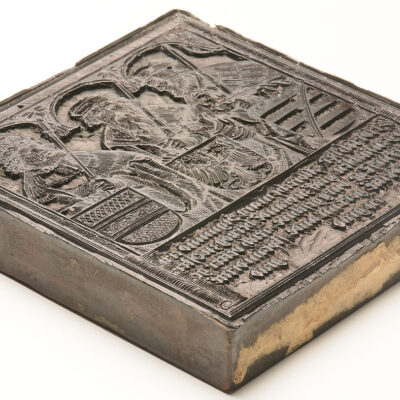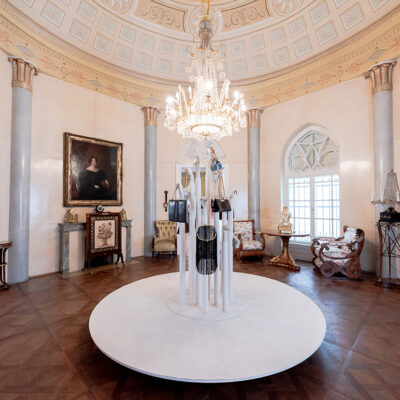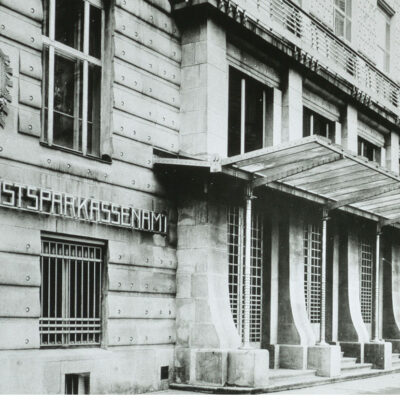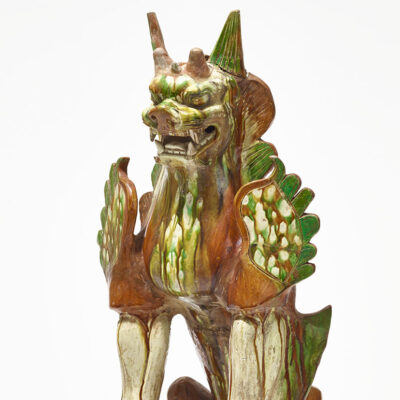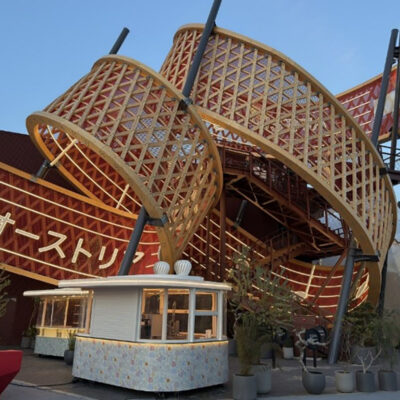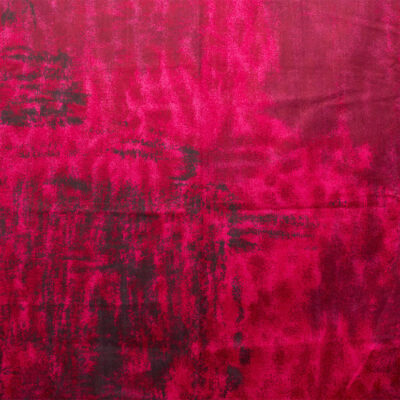1/4
Title
- Dish with base mark ,seto’
Collection
Period | Style | School
Material | Technique
-
Porzellan mit Bemalung in Kobaltblau unter und in Eisenrot und Gold auf der Glasur,
-
sog. ko-Imari-Ware
Measurements
- height: 8 cm
- diameter: 53 cm
Inventory number
- KE 1594-3
Department
- Asia Collection
Associated Objects
Description
-
The motif of the “1000 Cranes” derives from the painting of the Song period (960–1279) and is still popular in East and Southeast Asia as a goodluck motif. The homeland of the far-flying crane is supposed to be on the Island of Immortality; as a messenger of the gods it is always associated with the Eight Immortals in China, respectively the Lucky Gods in Japan. Hence it symbolizes the wish for a long life; the number 1000 underlines this—it stands for infinity. Although Seto has an age-old tradition of ceramic production, porcelain was
not produced here until the 19th century. A style typical of Seto has never developed, even though under-glaze blue dominates in the decoration.
(Wieninger, Johannes)
On display
on display
-
bowl, Dish with base mark ,seto’, Anonym, MAK Inv.nr. KE 1594-3
Last update
- 24.09.2025

